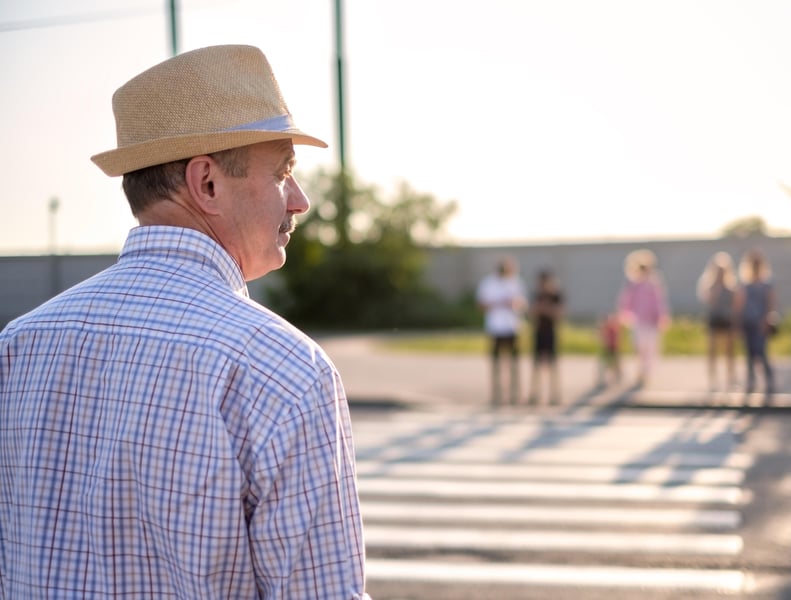Covid-19 Vaccine and Covid-19 Bivalent Booster now available!
Please Click Here to schedule your appointment or call 310-204-1111.
Manténgase sano!

- By Cara Murez HealthDay Reporter
- Posted July 22, 2022
3 Key Changes Could Make Roads Safer for Older Pedestrians
Better lighting and other changes to street crossings could improve pedestrian safety for seniors -- the age group most likely to be killed by oncoming vehicles.
Researchers pored over four years of Oregon crash data for locations considered dangerous for walkers age 65 and older. They called for changes to improve visibility and illumination, to increase the use of left-turn traffic signals and shorten crossing distances.
"Better lighting at intersections and near crossing locations, rapid flashing beacons and other devices like 'Pedestrian Crossing' warning signs with flashing LEDs would likely help a lot," said study co-leader David Hurwitz, an assistant professor of engineering at Oregon State University.
Though the project used data from Oregon collisions, it provides a framework for other states to develop their own safety recommendations.
The study found that about 20% of crashes happened at dark places with limited street lighting. Eight percent happened at dawn and 5% at dusk, when ambient lighting is low.
Converting "permissive" left turns for drivers at certain locations into "protected" ones would also help, Hurwitz said.
A permissive left turn requires watching for a break in oncoming traffic, while a protected left turn allows the driver to go when a green arrow light comes on.
"In a permissive left turn, drivers can become so focused on looking for a gap in the traffic that they don't see pedestrians,"Hurwitz said in a university news release. "Increasing the use of protected left turns in locations where a permitted turn may be difficult can improve the safety of older drivers as well as pedestrians because it reduces one of the more complex driving tasks."
In some cities, changes have forced left-turning vehicles to slow down with "slow turn wedges" and "hardened center lines," Hurwitz said.
A wedge, outlined by pylons in the intersection, makes drivers turn more sharply. That means they need to slow first. A hardened center line, constructed of thick posts called bollards, prevents drivers from crossing the center line before they are supposed to.
About 25% of accidents nationwide in which a vehicle hits a pedestrian occur when a vehicle is turning left.
Older pedestrians are among the most likely to be killed in traffic accidents, according to the National Safety Council. Nationwide, there were 709 traffic fatalities involving pedestrians between 65 and 74 years of age.
"As a group older pedestrians are more frail, walk more slowly and are at increased risk of falling while walking," Hurwitz said. And some of those people may also have an inhibited ability to make safe road crossing decisions due to vision or hearing impairments and cognitive decline."
Shortening crossing distances could improve safety by reducing exposure time, he noted.
This could be accomplished by installing pedestrian islands in the median, curb extensions and raised crosswalks. "Road diets" -- reducing the number of car travel lanes in an area -- is another strategy.
"Our main objective was identifying low-cost treatments that could be widely implemented, but looking at ways to address speeding may also help improve older pedestrian safety and should be a focus of future work," Hurwitz said.
The findings were recently published in Transportation Research Record: Journal of the Transportation Research Board.
More information
The National Highway Traffic Safety Administration has more on pedestrian safety.
SOURCE: Oregon State University, news release, July 19, 2022





